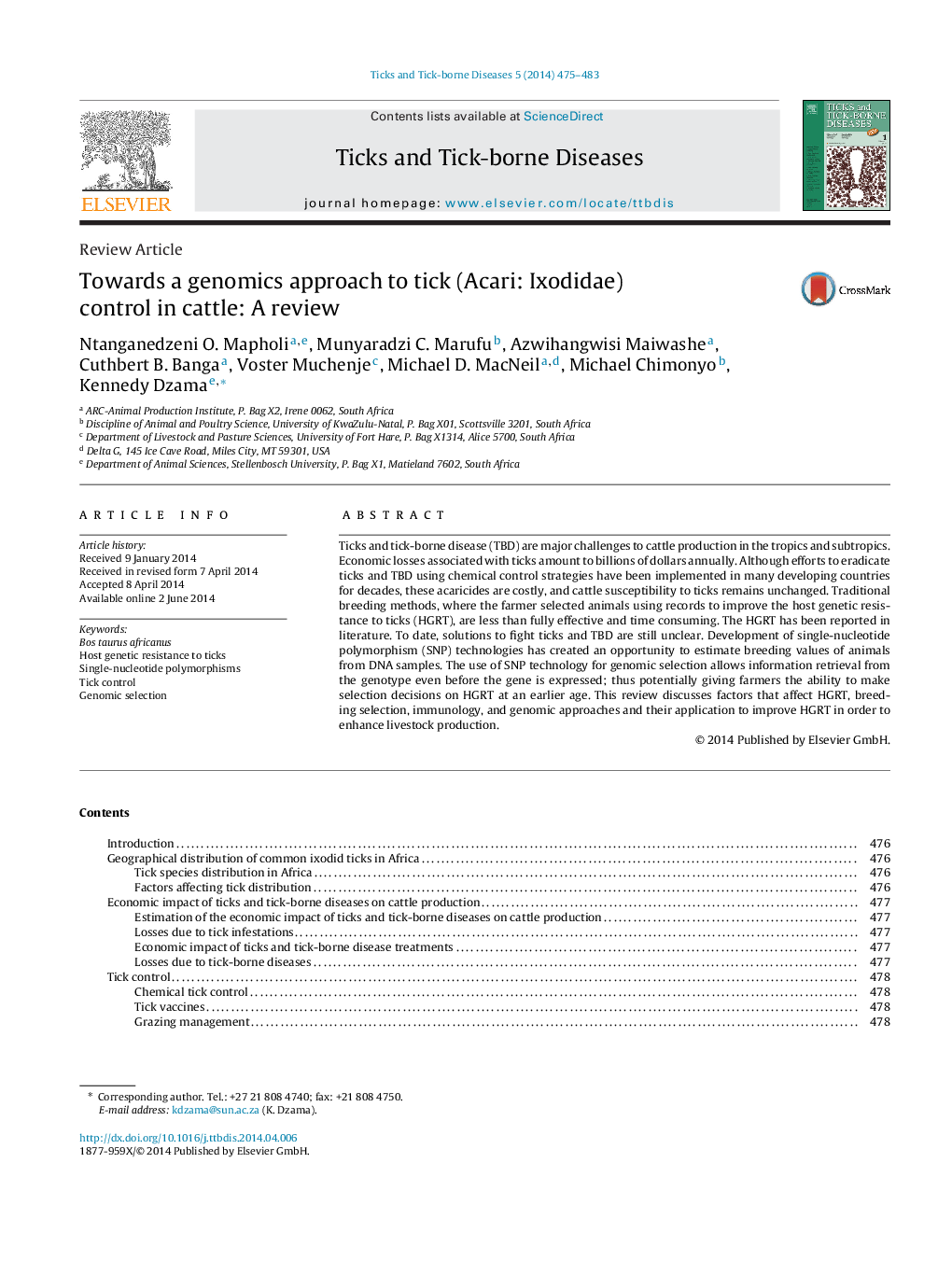| Article ID | Journal | Published Year | Pages | File Type |
|---|---|---|---|---|
| 2474041 | Ticks and Tick-borne Diseases | 2014 | 9 Pages |
Ticks and tick-borne disease (TBD) are major challenges to cattle production in the tropics and subtropics. Economic losses associated with ticks amount to billions of dollars annually. Although efforts to eradicate ticks and TBD using chemical control strategies have been implemented in many developing countries for decades, these acaricides are costly, and cattle susceptibility to ticks remains unchanged. Traditional breeding methods, where the farmer selected animals using records to improve the host genetic resistance to ticks (HGRT), are less than fully effective and time consuming. The HGRT has been reported in literature. To date, solutions to fight ticks and TBD are still unclear. Development of single-nucleotide polymorphism (SNP) technologies has created an opportunity to estimate breeding values of animals from DNA samples. The use of SNP technology for genomic selection allows information retrieval from the genotype even before the gene is expressed; thus potentially giving farmers the ability to make selection decisions on HGRT at an earlier age. This review discusses factors that affect HGRT, breeding selection, immunology, and genomic approaches and their application to improve HGRT in order to enhance livestock production.
